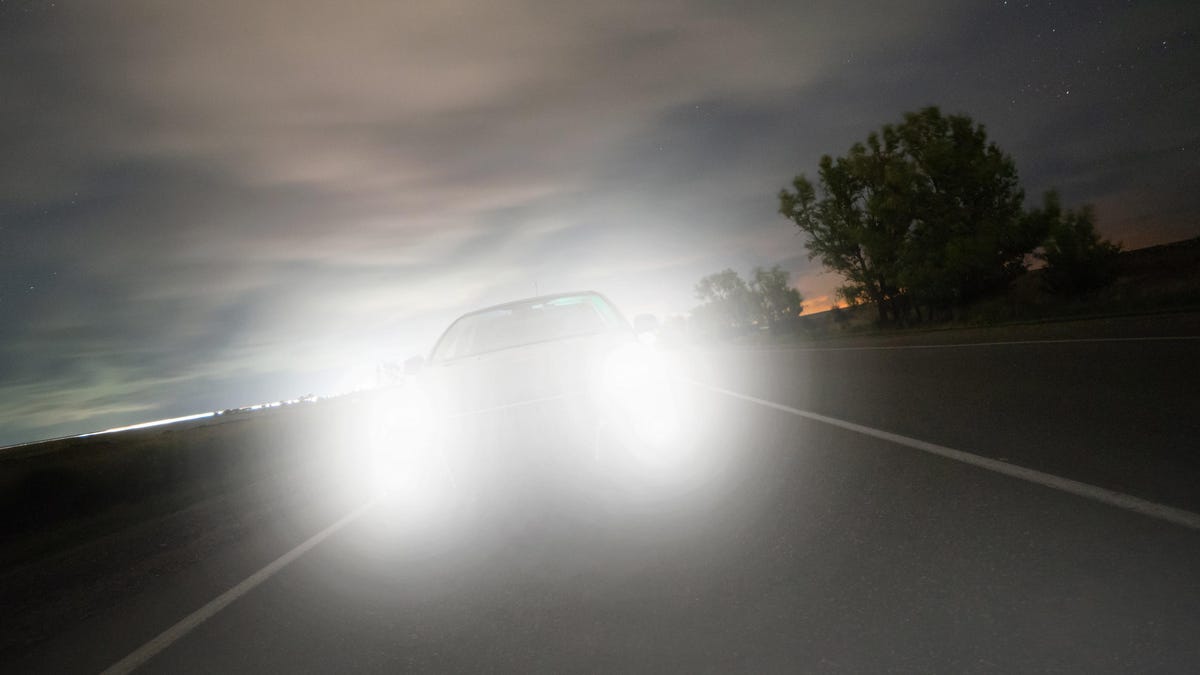[ad_1]

Like everything else in the modern age, car headlights have enjoyed a steady advance in terms of technology and function. Back in the earliest days of cars, headlights used to be called headlamps because that’s what they were—gas-fueled flames inside a glass enclosure. Eventually, car makers migrated to electric headlights, and these have progressed from relatively weak “sealed-beam” lights to today’s LEDs—which are great for lighting up the night in front of your car, but also terrible because they are so bright they can effectively blind oncoming traffic. Combined that with the SUVs and pickup trucks that now sit so high up you need a ladder to get in and out of them, and you have a plague of super-bright, blinding headlights upon our roads. The problem is exacerbated by drivers who don’t seem to understand the rules around high beams.
Progress is going to save us again, because “smart” headlights are going to hit the market soon that will automatically adjust brightness and direction, sparing oncoming traffic. But it’s going to take a while to get those all those too-bright headlights off the road, so for the time being you’re still in danger of having your eyeballs seared out of your head without warning when driving at night. Since the best defense is a good offense, what you really need is a strategy—here’s what to do when you’re blinded by another car’s high beams.
Be defensive
The first step to dealing with irritatingly bright headlights and high beams is to be proactive. When you see oncoming traffic heading your way—especially if their headlights are very bright in the distance—slow down! Reducing your speed will give you a little more maneuvering room and reduce the stress of trying to navigate through a small, temporary sun as it roars toward you. If you’re on a multi-lane road, move into the right-most lane so you’re as far from the oncoming traffic as possible. One thing you should never do is flash your high beams in retaliation. It might feel good, but blinding another driver isn’t going to make things safer.
Look to the right
This might seem obvious, but it’s worth saying: Just as you don’t look directly at the sun, don’t look directly at oncoming high beams. Not only will that blind you in the moment, it can cause lingering night blindness for a short time after the car has passed as your eyes struggle to adjust to changing conditions. Try to look towards the right edge of the road instead. Your peripheral vision should be enough to guide you for a short time until the high beams are behind you.
G/O Media may get a commission

Up to $100 credit
Samsung Reserve
Reserve the next gen Samsung device
All you need to do is sign up with your email and boom: credit for your preorder on a new Samsung device.
Adjust your mirror
If the high beams are coming from behind you, filling the interior of your car with a light bright enough to make you suspect you’re being beamed up to the mothership, the easiest and best thing to do is to adjust your rearview mirror. All rearview mirrors have a “night mode” function that cuts the glare. Familiarize yourself with how yours works and don’t hesitate to engage it the moment someone creeps up behind you with lights so bright you can feel your skin burning.
Evasive action
Finally, even with all these other steps the best thing to do is to avoid super-bright high beams altogether if you can. Get out of the way of cars with bright lights coming up behind you and shift lanes to avoid the glare of oncoming traffic as much as you can.
Source link

